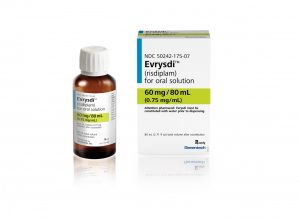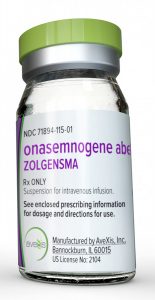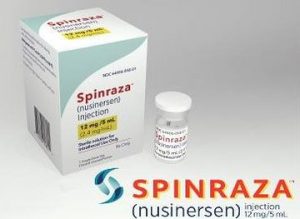Comparing SMA Therapies Neither Easy Nor Fair, Clinicians Say

[Editor’s Note: This is part of a series of articles into the discovery and development of Evrysdi — SMA’s newly approved disease-modifying therapy and its first oral and at-home one — as well as the scope of SMA issues and treatments. Here, experts advise against comparing treatments head-to-head until more is known, and remind our readers that each patient’s therapy needs and responses differ.]
While it may be tempting to compare the benefits of Evrysdi (risdiplam) — the recently approved, and first oral and at-home therapy for spinal muscular atrophy (SMA) — with Spinraza and Zolgensma, only head-to-head clinical studies can do so with authority.
And no such studies are now underway.
“We’re really not at the point where we can make a strict comparison,” Richard S. Finkel, MD, a leading pediatric neurologist at St. Jude Children’s Research Hospital in Tennessee, said in an interview with SMA News Today. Finkel conducted trials of all three SMA therapies while at Nemours Children’s Hospital in Orlando, Fla., and elsewhere.
Biogen’s Spinraza was approved in late 2016 as the first disease-modifying therapy for SMA, followed by Novartis’ gene therapy Zolgensma in May 2019. Spinraza is open to all SMA types without restrictions, while Zolgensma is available for use in children up to age 2 in the U.S. and Japan, and to those with almost all types who weigh up to 21 kilograms (about 46 pounds) in Europe.
This month, Evrysdi — marketed by Genentech, a subsidiary of Roche — became SMA’s third targeted treatment, approved for patients 2 months of age and older with all types of the disease.
In the absence of head-to-head (called comparative) studies, the most well-structured data on the effectiveness of these therapies that could be used for comparisons now come from clinical trials.
However, these are “different trials, [conducted] at different times, and in different baseline populations,” Laurent Servais, MD, PhD, a researcher also involved in the trials of all approved SMA therapies and a professor of pediatric neuromuscular diseases at the MDUK Oxford Neuromuscular Centre, said in a separate interview.
“So, we must be very cautious in such comparisons,” he added.
Even the main trials involving infants, up to 6 or 7 months old, with the more severe type 1 disease — such as the ENDEAR study (NCT02193074) for Spinraza, Zolgensma’s START trial (NCT02122952), and the FIREFISH study (NCT02913482) for Evrysdi — have significant differences in trial design, patient populations, and effectiveness outcomes.
At the time of ENDEAR, doctors — including Servais — were not aware of the degree of help that could be given these infants. Standard-of-care for SMA type 1 was very different then from what it is now, he said.
And, while all three therapies work to restore SMN, the protein lacking in patients with SMA, they do so in different ways, through distinct mechanisms. Some comparisons may not be appropriate.
The gene therapy Zolgensma delivers a working copy of SMN1, the mutated gene in SMA, to a patients’ cells. Conversely, both Spinraza and Evrysdi target a “backup” gene called SMN2 that can only partly compensate for the loss of SMN1-derived SMN. The two therapies, however, are molecularly and mechanistically distinct.
For all these reasons, most researchers and clinicians at this point do not feel comfortable claiming that any one SMA therapy is better than another.
Still, the recently approved Evrysdi “has many attractive features,” Finkel said. It has consistently shown an excellent safety profile, and solid effectiveness in the broadest range of SMA patients — in terms of age and disease severity — evaluated in trials to date.
Evrysdi’s clinical program ranges from presymptomatic newborns to symptomatic patients up to age 60, and those with SMA types 1, 2, and 3. Available topline data so far — from the Phase 2/3 FIREFISH and SUNFISH (NCT02908685) studies — cover more than 200 patients ages 1 month to 25 years with these three types, “which is remarkable,” Servais said.
“This we don’t have for any other SMA medication,” he noted, “and that’s an important distinction.”
Greater improvements were seen in younger patients, as expected. But older individuals also showed either improvements or stabilization in motor function and are “indeed doing better … in their real lives,” Servais said.
After at least two years of Evrysdi’s use, he added, “there is absolutely no safety issue.”
Evrysdi also is the only SMA therapy designed to target every cell in the body, Finkel said, which may be an advantage based on increasing evidence suggesting that SMA is a bodywide disease. Spinraza and Zolgensma mainly target motor neurons, the most profoundly affected cells in SMA patients.
“We need to learn more about this, but I think that could be a very important factor that distinguishes it from the other two [therapies],” Finkel said.
Evrysdi’s “beauty,” though, lies in its oral administration, Servais said, which poses little burden to both patients and doctors. As a flavored liquid taken once per day, the therapy is shipped to patients’ homes and taken there, which is an even greater advantage during the ongoing COVID-19 pandemic.
Its ease of use may be especially important for patients not eligible for the one-time gene therapy Zolgensma, and for those whose severe scoliosis (or surgery to correct it) make Spinraza’s spinal injections challenging.
“At the end of the day, [Evrysdi] is a treatment option for patients who are difficult to treat with other [available] approaches,” Servais said.
Looking ahead
While comparing SMA therapies is not feasible, “we need to move forward with what we do know,” Finkel said. Recommending one therapy over another to a patient cannot be “a cookbook type of thing,” but rather a choice made after a careful, detailed, and individualized discussion with each patient or the child’s parents.
The ample and well-meaning but naturally biased information circulating on social media should not be a decision-making factor, Finkel said, encouraging “parents and patients to go into those discussions with an open mind.”
Social media rarely gives an “accurate or a full picture” of such therapies, he said, oftentimes because a treatment working very well for one patient may not be anywhere near as effective for another.
In the absence of head-to-head trials, future comparisons need to rely on real-world data from SMA registry studies. Such studies prospectively collect information — including treatment response — from patients across countries, with all ages, disease types, degrees of disability, and genetic backgrounds.
“Until you have a few thousand patients treated for a few years and really get what we would call real-world experience,” Finkel said, comparing SMA therapies remains guesswork.
“Hopefully over time, by carefully evaluating these patients once or twice a year or so, we’ll be able to gather the information that will allow us to make proper comparisons,” he added.










